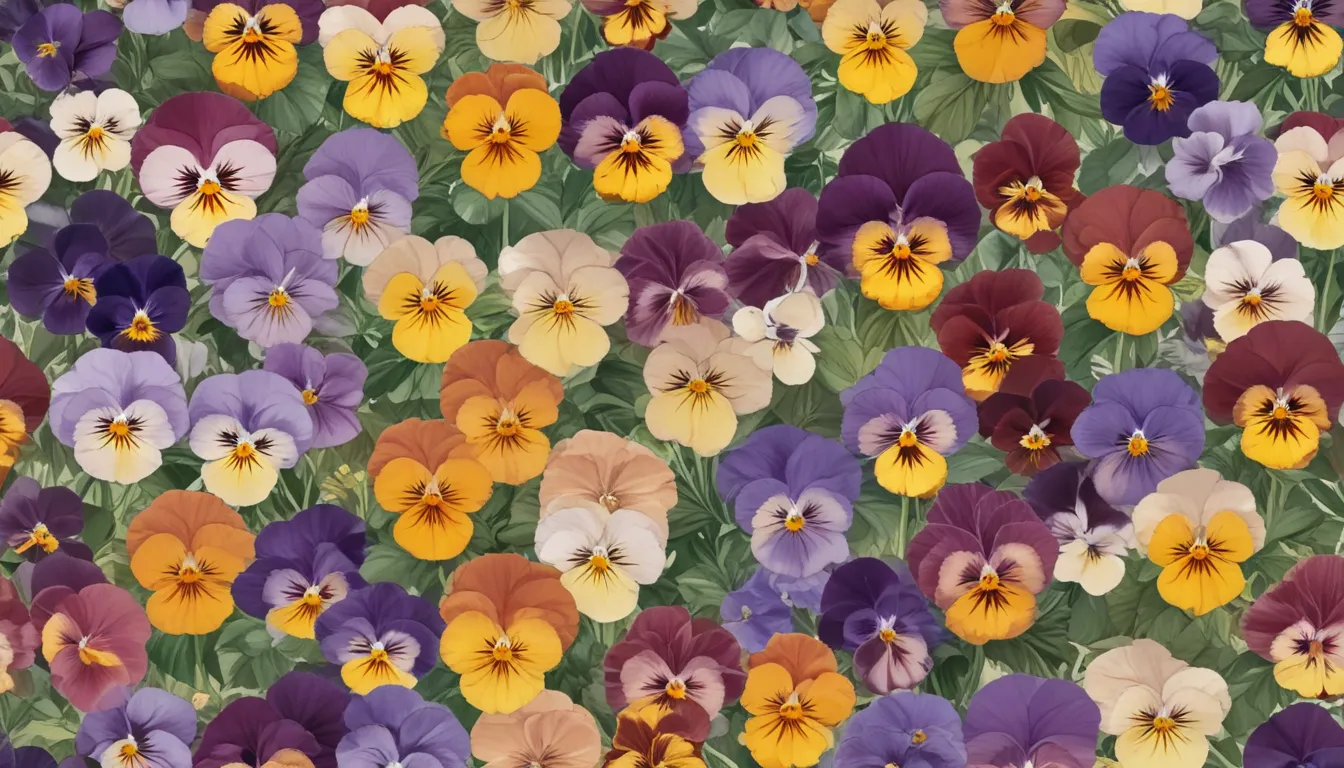The Ultimate Guide to Growing Pansies and Violas for Year-Round Color Explosion

Let’s dive into the vibrant world of pansies and violas, where a splash of color can transform your garden into a stunning masterpiece. Whether you’re a seasoned gardener looking to expand your flower beds or a novice eager to learn the ropes, these flowers are perfect for everyone.
The Tale of Pansies and Violas
The name “pansy” originates from the French word pensée, meaning “thought.” These flowers, commonly known as pansies or violas, trace their roots back to the European Viola tricolor. What sets them apart? Pansies have four petals facing upward and one petal facing downward, while violas boast two upward-facing petals and three facing downward. So, next time you’re at a garden club meeting, you’ll have a fun fact to share!
The stunning array of colors and patterns we see today is a result of cross-breeding efforts by wealthy landowners and their skilled gardeners. Thanks to their dedication, we now have over 400 cultivars of V. tricolor to choose from.
The Edible and Medicinal Marvels of Pansies
These versatile flowers aren’t just eye candy – they’re edible! From decorating cakes to infusing honey, pansies add a pop of color and flavor to your culinary creations. But remember, only consume flowers from organically grown plants to ensure safety.
Apart from their culinary uses, pansies have a rich history of medicinal applications. The mucilage found in the plant offers relief for coughs, respiratory issues, skin wounds, and more. However, be cautious with fertilizers when growing pansies for consumption.
Care and Maintenance Tips for Thriving Pansies
To ensure your pansies flourish, follow these care and maintenance tips:
Starting Strong
When purchasing pansies, look for healthy leaves and stems, strong roots, and plenty of buds. Opt for plants with buds over blooming flowers for long-lasting color.
Planting Practices
Fall is the ideal time to plant pansies, providing them with cooler temperatures for healthy root development. Ensure they receive at least 6 hours of sunlight daily, and plant them in well-drained soil with 6-10 inches of spacing for optimal growth.
Maintenance Rituals
Give your pansies regular haircuts (deadheading) to promote new growth and vibrant blooms. Fertilize every two weeks during the fall and spring seasons for the best results.
Cold Weather Care
Pansies exhibit remarkable resilience to cold weather, but consider watering them before a hard freeze to protect their roots. Mulch with pine straw for added winter protection.
Pest Prevention
Stay vigilant against common pests like aphids, cutworms, and slugs by inspecting your plants regularly. Insecticidal soaps can help prevent infestations.
Embracing the Passing Seasons with Pansies
While pansies thrive in fall and spring, they may struggle in warmer weather. Consider opting for specific cultivars bred for summer performance if you reside in a cooler climate. Moreover, embrace the burst of colors pansies offer in the springtime sun.
Exploring Cultivar Varieties
Dive into the world of pansy cultivars with options like:
- Colormax: Hardy and reliable, these violas offer large flowers and winter resilience.
- Delta: Known for its colorful variety and continuous blooming, perfect for picky gardeners.
- Matrix: Vibrant and hardy, these cultivars offer unique colors like ‘Solar Flare’.
- Mammoth: Giant flowers in various hues, but less hardy against cold temperatures.
While local nurseries offer ready-to-plant options, consider starting from seeds for a broader selection. Cool Wave Series from True Leaf Market offers an array of seed options for your pansy adventures.
Conclusion: Let Your Garden Bloom with Pansies and Violas!
Planting pansies and violas can elevate your gardening experience, offering a burst of color and versatility throughout the seasons. So, the next time you’re at a garden center, grab a bunch of vibrant pansies and let your garden blossom with joy.
Do you have any fond memories of growing pansies? Share them with us or ask any questions in the comments below. Let’s connect and celebrate the beauty of these lovely flowers together!
For more gardening tips and flower guides, stay tuned for our upcoming articles:
- Tips for Growing Violets, Violas, and Pansies Indoors
- How to Grow Joe-Pye Weed in Your Landscape or Garden
- How to Grow Hardy Fuchsia Shrubs in the Home Garden
Let’s keep the gardening conversation thriving! Happy planting, everyone!





